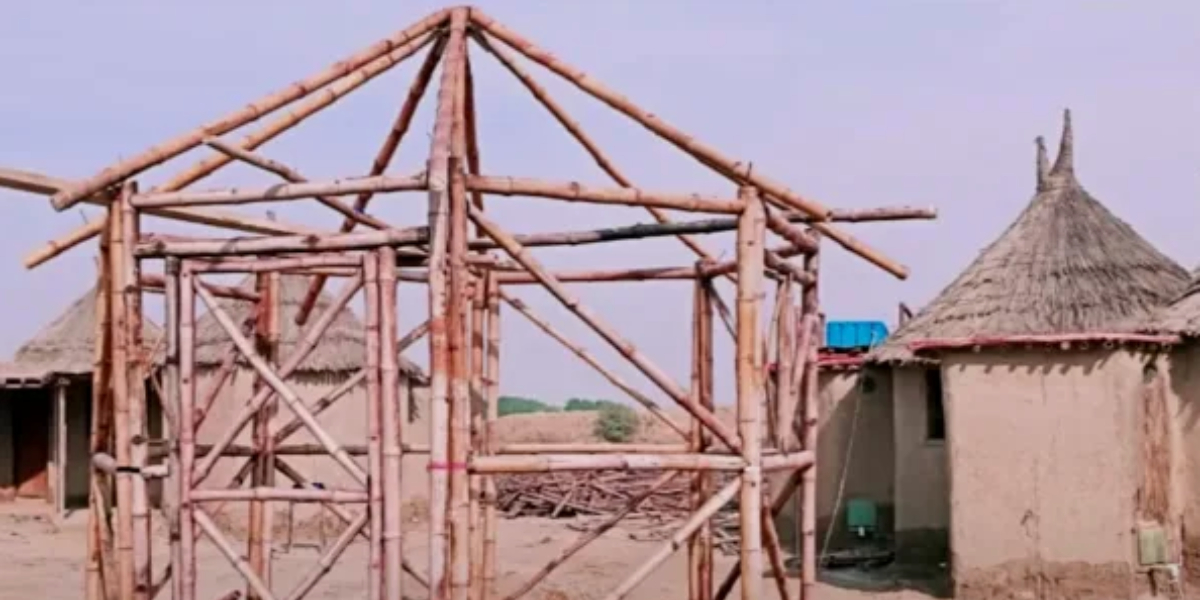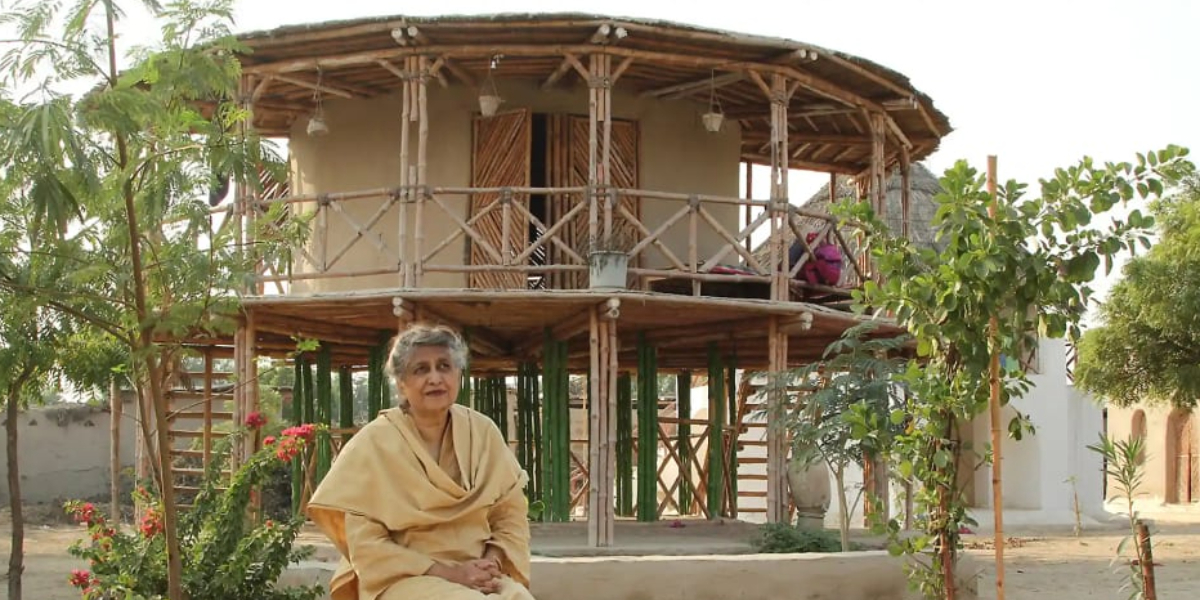AÑO
2023
CATEGORÍA
Hogar
OBJETIVOS
Salud y bienestar, Industria, innovación e infraestructura, Ciudades y comunidades sostenibles, Confianza, tolerancia y empatía, Refugiados y migrantes
PAL. CLAVE
temporary shelters, Bamboo
PAÍS
Pakistan
CRÉDITOS
Yasmeen Lari
LINK
https://www.fastcompany.com/90783342/amid-pakistans-extreme-flooding-these-low-cost-bamboo-shelters-could-provide-relief
OctaGreen
Low-cost bamboo shelters for extreme flooding
How does it work?
The shelters are simple to build, low cost, and zero carbon. They also can be disassembled and moved, and the same basic materials can be used to make more permanent structures. The one-room, 12×12-foot structures have enough room for five people to sleep. The walls are made from eight bamboo panels—Lari calls the design the “OctaGreen”—that can be connected with ropes. A pole in the middle holds up a bamboo-framed roof. Everything is covered with handwoven reed mats. Furthermore, artisans make terracotta tiles at her Zero-Carbon Campus that can replace the pavement and help water get absorbed into aquifers underground.
Why is it needed?
In Pakistan, floods and landslides from torrential rains in 2022 have destroyed houses, sometimes sweeping away large buildings in the raging water. Because there are not enough tents for displaced communities, the need for shelters was critical. While working at a camp for displaced people, Yasmeen Lari began experimenting with bamboo. At a site that Lari calls the Zero-Carbon Campus, she trains female artisans to build bamboo shelters. A prefab version includes bamboo panels that can quickly be connected with ropes.
How does it improve life?
It’s essential, she says, that the families that use the shelters are involved in building them. Earlier this summer, a group of six artisans started building a small village that will include 100 bamboo homes. (All of these survived the current flooding.) Now, Lari wants the artisans to train others. “My artisans, who are my best entrepreneurs, will now teach other artisans from surrounding villages to be able to go back and build your own unit,” she says. “If I can disperse it all over the country, we can make hundreds of these daily.” At the Zero-Carbon Campus workshop, a team of five artisans makes eight shelters daily. So it is a temporary shelter solution and requires a team effort to build them.




